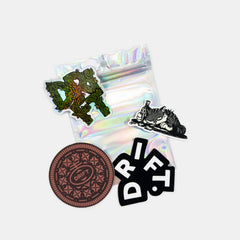Innervisions is the fourteenth studio album from Stevie Wonder, and it is absolutely stacked with innovative sounds, lush tones and incredible songs.
After thirteen albums in nine years, piano virtuoso - and arguably one of the greatest soul voices ever - Stevie Wonder entered a new period with the iconic Motown label (specifically through its imprint, Tamla) that allowed him full artistic control over his music. 1972 saw the release of both Music of My Mind and Talking Book, bold and fearless works from an artist truly finding a new direction. But, summer 1973 brought the release of Innervisions, possibly his finest hours and certainly some of his most vitalising and enduring songs. His new direction was spearheaded sonically by his use of keyboards and synthesisers, with the album utilising the pioneering TONTO ("The Original New Timbral Orchestra"), a massive, multitimbral analog synthesiser. It was designed and built by Malcolm Cecil and Robert Margouleff and was notable for its ability to produce many different sounds simultaneously. Cecil and Margouleff are credited as synthesiser programmers and also producers on the album, of which Stevie Wonder wrote, produced, and arranged entirely.
Recorded between Electric Lady Studios (NYC) and Record Plant (L.A.), Wonder played many of the instruments on the album, with some unbelievable session players adding to the rich sound. His confidence was a defining statement of artistic freedom, and the album would rightly be awarded Album of the Year at the 1974 Grammys.
Innervisions also marked a more pronounced shift towards social commentary, specifically the tolls of drugs on Too High and systemic injustices across much of the album. Living for the City was one of the earliest tracks to blend the spoken-word narratives with deep funk sound and proto-disco thump. There is little to be left to the imagination, and Wonder’s willingness to be so direct and overt really did highlight his position as a maturing artist of prominence, speaking directly about struggle and spirituality.
The album is just so stacked with magic moments. Higher Ground is one of the best ever Side B, track ones, the way it rips to life with that incredible clavinet sound run through a wah-wah (I think that is what it is? it warbles all over the place either way) is just so powerful. The same piano motifs appear in the swooning Golden Lady and also across the Latin grooves of Don't You Worry 'Bout a Thing, different, but linked and super smart songs. Not only in the artwork, there are gestures towards Afrofuturism and even progressive rock too, the density in every aspect of the album is marvellous. There is such a lot going on, you just have to focus on each nuance and go with the flow. Oh god, even the album closer He's Misstra Know It All is a right ripper, apparently a slight about the arrogance of 37th President of the United States, Richard Nixon. Yeah man!
A proper glorious album of anthems, audacious studio magnitude and quite perfect arrangement. You kind of just have to marvel at it.







